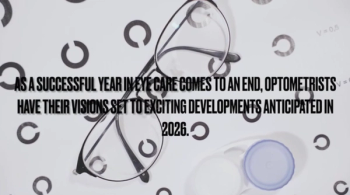
Fluoroquinolone is developed expressly for ophthalmic use
Modern fluoroquinolones have evolved over more than 4 decades, from the parent quinolone compound, nalidixic acid (NegGram, Sanofi-Aventis US), patented in 1962. Since then, more than 10,000 derivatives have been patented, all with structural modifications that added features to improve systemic absorption, extend spectrum of action to include Gram-positive microorganisms, and reduce systemic toxicity.
Key Points
Modern fluoroquinolones have evolved over more than 4 decades, from the parent quinolone compound, nalidixic acid (NegGram, Sanofi-Aventis US), patented in 1962. Since then, more than 10,000 derivatives have been patented, all with structural modifications that added features to improve systemic absorption, extend spectrum of action to include Gram-positive microorganisms, and reduce systemic toxicity.
Notably, in 1973 the first fluoroquinolone antibiotics were identified, with the addition of a fluorine atom at position 6. Norfloxacin followed in 1978, ciprofloxacin in 1983, then ofloxacin and its l-isomer levofloxacin, and most recently, moxifloxacin and gatifloxacin, the latter two containing a methoxy group at position 8, which increased potency and activity against atypical microbes and some anaerobes as well.1, 2
'Respiratory fluoroquinolones'
Chlorinated fluoroquinolones
Trends in bacterial susceptibilities in ocular isolates should be closely monitored. Data from sources such as Ocular TRUST3 clearly show a change in susceptibilities of ocular isolates in recent years, with reduced bacterial susceptibility to many familiar fluoroquinolones. Although considered broad-spectrum, it is worthwhile noting that many fluoroquinolones had not shown reliable activity against methicillin-resistant Staphylococcus aureus (MRSA) or against microbes that were classified as fluoroquinolone-resistant. Many bacterial isolates that were considered resistant to ciprofloxacin, including S. aureus and some streptococci, were not likely to be susceptible, even to newer-generation agents.4
In the 1990s, a subgroup of fluoroquinolones was noted to have particularly strong activity against Gram-positive microorganisms and against many resistant strains as well. These were the fluoroquinolones with a halogen atom, either fluorine or chlorine, at the C8 position. The agents were associated with increased potency, lower bacterial minimum inhibitory concentrations, slower development of bacterial resistance mediated by increased DNA gyrase mutations, and increased efficacy against MRSA, methicillin-resistant S. epidermidis, and fluoroquinolone- or ciprofloxacin-resistant strains.
Newsletter
Want more insights like this? Subscribe to Optometry Times and get clinical pearls and practice tips delivered straight to your inbox.













































.png)


